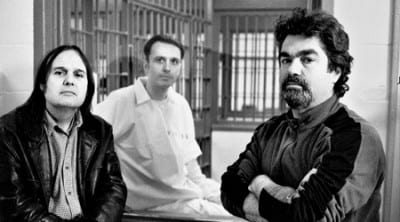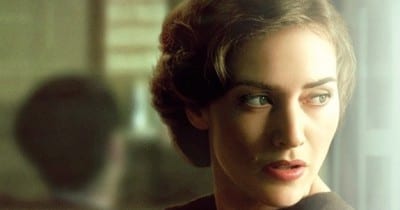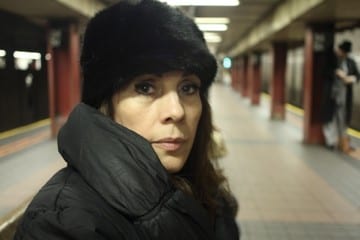Journaling Autumn: The Hamptons International Film Festival
by hollyherrick on November 15, 2011 in Festival Strategy
October was a month unlike any other I have had or will have again. On October 22nd, I got married at home on my family’s farm. In the weeks prior to my wedding, from October 13-17th, I helped to throw another party: the 19th edition of the Hamptons International Film Festival. I have programmed at the Hamptons since 2008 and have seen many changes there in just a few years, but it has always been a great place to see great films. While the fall is now a very crowded time for films and film events in New York, I’m happy to work for a festival that really earns its place on the fall calendar, and, in my completely subjective and biased eyes, I believe to be well worth the jaunt to the East End for cinephiles.
A big cornerstone for my work has always been to develop programs that I think will be important for an audience of filmmakers. It turns out that many of my personal highlights of the festival were the ways in which the festival provided a forum for filmmakers, a temporary community in a moment in time. Oftentimes, the festival’s role as a conversation center might create the right alchemy for filmmakers to be inspired with ideas about their careers, methods and craft, and expand their exposure to new work.
While I don’t see the sole purpose of this space as an opportunity to write about festivals that I program for (!), a few weeks out, I feel the need to debrief. Here are just a few very quick highlights from our festival, a little collection of memories of what went on (of course, this doesn’t nearly begin to cover everything that we did those 5 days—if you want a more comprehensive look you can visit the HIFF website).
At the Hamptons, 2011:

Paradise Lost 3: Purgatory
Celebrating American Auteurs.
This year’s festival opened with the wonderful JEFF WHO LIVES AT HOME, directed by indie-credentialed Mark and Jay Duplass. It was an honor to open the festival with two filmmakers who rely on their original ideas, writing and vision as the basis for their careers. It is exciting to see directors who make very personal films reach a wide audience.
Mid-festival, we welcomed Joe Berlinger and PARADISE LOST 3: PURGATORY. It was a momentous occasion to be one of the first festivals to present the final installment—complete with new epilogue!—of one of the best, most important documentary projects in film history.
Alexander Payne x 2: In addition to screening THE DESCENDANTS, we got to treat ourselves to a visit with Tracy Flick and friends and screened a print of ELECTION in honor of Matthew Broderick’s well-documented visit to the festival.
Filmmaking Craft
Ed Lachman spoke with Tom Hall in an epic conversation at our annual Kodak Cinematography Master Class: Ed is an incredible DP and a true artist, and we couldn’t have been more honored to host him. Museum of the Moving Image Curator (and former HIFF Programming Director) David Schwartz has done a truly outstanding job every year as the moderator of the annual class. However, when a conflict arose that prevented David’s attendance at the festival, we knew that Tom Hall would step up to the plate like the pro that he is. This was especially true given how important some of Ed’s work is to him personally; particularly the Todd Haynes oeuvre. Tom and I had screened the first two episodes of MILDRED PIERCE in Sarasota this year as a collaborative promotional event for The Sarasota Film Festival and HBO, and we both fell in love with the series. Ed spoke about MILDRED PIERCE in addition to a number of other past projects, including THE VIRGIN SUICIDES, THE LIMEY, A PRAIRIE HOME COMPANION and IMPORT/EXPORT. (I also overheard him revealing some old secrets about LA SOUFRIERE to eager ears).

HBO's Mildred Pierce, beautifully composed by Director of Photography Ed Lachman
I always do my best to encourage filmmakers to attend this annual class; not only is it a lot of fun, but some truly invaluable information about working director/cinematographer collaboration always surfaces.
And speaking of craft, Lisa Schwarzbaum’s coffee talk with Carter Burwell about the art of composing for film (day 2 of the festival) was an unforgettable morning treat.
Other Artists. The Hamptons being such an important destination for artists, the festival is always refreshingly overlapping with non-cinema arts. This year we welcomed David Bailey, the famed British fashion photographer whose life was the basis for David Hemming’s character at the center of Michelangelo Antonioni’s BLOW UP and who also spent some time with motion pictures. In the early 1970s, Bailey produced 3 films as slice of life biographies of some of the era’s most famous personalities: Luchino Visconti, Cecil Beaton, Andy Warhol, the latter two of which the affable and entertaining Mr. Bailey presented at the festival. His sensitive eye for his subjects, combined with his unique compositional style, makes these films a rare document of the time.
A few of our other guests from the greater art world: Rufus Wainwright, now in production on a documentary about his mother Kate McGarrigle (directed by Lian Lunson); installation artist Jim Denevan, the subject of a short documentary, who created a large scale sand sculpture on a public beach during the festival; and Winfred Rembert, a southern painter from the and the subject of a biographical documentary, whose work was on display at a local gallery throughout the fest.

Fellipe Barbosa's LAURA
Awards Surprises
Awards are never my favorite part of film festivals. As most filmmakers who have done the festival circuit come to realize, some films are just simply more ‘awardable’ than others, and this is not consistently a result of greater quality or artistry. There are reasons that films will stand out to a jury or score higher on audience votes, and every year, incredibly worthy films are never recognized with an audience or jury award. A five minute brainstorm of essential & break out films not formally awarded in their time: Ozon’s SEE THE SEA, DAZED AND CONFUSED, Claire Denis’ CHOCOLAT, and the all-time stand out of war epics, COME AND SEE. This shouldn’t be news, but unheralded films are in excellent company.
However imperfect, awards are useful in our industry. When talented filmmakers are flying under the radar, it is especially exciting to see them achieve some much-deserved recognition for their efforts. You can see who won here, but I wanted to take note of a few true up-and-comers who took home some awards:
Lauren Wolkstein and Christopher Radcliff, who received the Golden Starfish Award for Best Short Film, for their acutely atmospheric THE STRANGE ONES. While this film is certainly making the rounds, Lauren and Christopher are young filmmakers who everyone should have their eye on (as are the rest of the filmmakers whose work was featured in this year’s competition!)
Mark Jackson’s WITHOUT, which premiered at Slamdance and has been faring strongly on the regional—and now world—festival circuit, took home two more prizes: one for cinematography, the second for Pioneering Vision (with the festival’s Wouter Barendrecht Award).
Felippe Barbosa, whose short films made festival rounds a few years ago, won highest honors in the documentary category with his first ever documentary feature, LAURA, seen for the first time ever by an audience at the Hamptons. I am so excited to see what happens next with this excellent and unusual film. You can read our description of it here.
